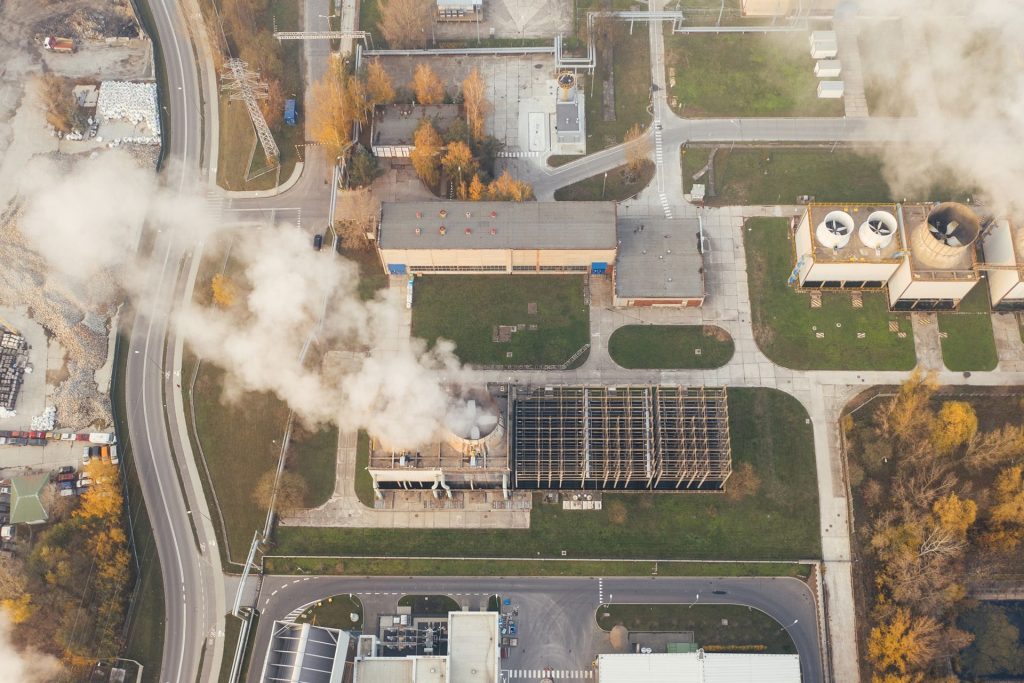Greenhouse gas emissions fall slightly throughout Switzerland
“Production” of tonnes of CO2 equivalent (46.2 million) is 14 per cent lower than in the sample year 1990, but only 0.3 per cent lower than in 2018
Greenhouse gas emissions in Switzerland amounted to 46.2 million tonnes of CO2 equivalent in 2019, down by around 0.3 million tonnes on 2018, according to the Federal Office for the Environment’s (FOEN) Greenhouse Gas Inventory.
Emissions were thus 14% lower than in the 1990 reference year. In the buildings sector, the unchanged emissions compared to 2018 are largely attributable to the cold winter.
Switzerland’s Greenhouse Gas Inventory 1990–2019
Emissions from industry also remained unchanged in 2019, while in the transport sector they are still above the 1990 level. There was a slight decrease in agriculture and for synthetic greenhouse gases.
According to current estimates, Switzerland will miss its national climate target of reducing greenhouse gas emissions by 20% by 2020 compared to 1990. In order to achieve a significant reduction in emissions, it is essential to strengthen measures as set out in the revised CO
On 12 April 2021, the FOEN submitted the Swiss greenhouse gas inventory for the years 1990-2019 to the UN Climate Change Secretariat. The inventory provides a complete picture of Switzerland’s greenhouse gas emissions covered by the Kyoto Protocol.

Buildings: emissions 34 per cent lower than in 1990
In 2019, greenhouse gas emissions from the buildings sector were again 11.2 million tonnes of CO2 equivalent (CO2-eq), which is 34 per cent lower than in the reference year 1990.
The fact that emissions remained unchanged compared to 2018, despite a colder winter, is due in particular to improvements in the energy efficiency of buildings and the increasing replacement of oil and gas heating systems with heat pumps and renewable energy sources.
An app to make it easier for Swiss farmers to work
Switzerland will have its own ambassador for… science
The marked influence of winter temperatures on emissions shows that buildings are still largely heated with fossil fuels.
If the impact of weather is excluded from the calculation, this results in a decrease in emissions for the sector of around 0.3 million tonnes per year. This trend is not strong enough to reach the 40% reduction target by 2020.

Industry: emissions down 14% compared to 1990
In 2019, the industrial sector released 11.2 million tonnes of CO2-eq, around 14 per cent less than in the 1990 base year. Emissions remained unchanged from the previous year.
CO2 law: a must for Switzerland and the cantons
Hyundai’s hydrogen gamble starts in Switzerland
Emissions from industry have remained relatively stable in recent years. If this trend continues, the target of a 15% reduction by 2020 will be missed.

Transport: emissions up 1 per cent since 1990
In 2019, as in 2018, emissions from the transport sector amounted to around 15 million tonnes of CO2-eq. Emissions are thus 1% higher than in the reference year 1990.
Switzerland’s long-term climate strategy
Federal Council approves Swiss “Green Fintech” network
Biofuel blending has increased significantly in recent years, reaching a share of almost 4 per cent of total fuel sales in 2019. More efficient vehicles have also reduced CO2 emissions per kilometre.
However, the increase in kilometres driven cancels out these positive effects. If the trend remains unchanged, the transport sector will miss its target of reducing emissions by 10 per cent by 2020.

Other emissions: agriculture and synthetic greenhouse gases
Emissions from agriculture decreased slightly compared to 2018, to about 6.5 million tonnes of CO2-eq, down about 12 per cent from the 1990 base year.
Emissions of synthetic GHGs, such as refrigerants, decreased slightly compared to 2018 to about 1.6 million tonnes in 2019.
As of 1 January 2019, the Montreal Protocol regulates 18 important synthetic greenhouse gases. With the implementation of the Protocol – including by Switzerland – a significant reduction in emissions of these gases is expected.
Ethanol: Switzerland intends to build up mandatory stocks
Swiss nuclear material abroad in 2020
However, Switzerland is unlikely to achieve the planned reduction in other emissions of around 10% compared to 1990 by 2020.
According to the 2019 Greenhouse Gas Inventory, the FOEN assumes that Switzerland will not be able to achieve the overall target set out in the CO2 Act of reducing greenhouse gas emissions by 20% compared to 1990 by 2020.
In order to achieve a significant reduction in emissions, it is essential to step up measures, as provided for in the revised CO2 Act.

The impact of measures implemented to contain the pandemic
About three-quarters of Switzerland’s greenhouse gas emissions are caused by the use of fossil fuels such as oil, natural gas, petrol and diesel, mainly in the transport sector, for heating buildings and in industry.
The remaining emissions come largely from agriculture. If activities are reduced as a result of measures taken to contain the pandemic, energy consumption decreases and, consequently, so do emissions.
At the Federal Office for the Environment there will be Petra Zimmermann
The 2020 grape harvest in Switzerland? Scarce, but excellent…
Greenhouse gas emissions from the transport, building and industry sectors are calculated by the FOEN from the consumption of fossil fuels according to the Federal Office of Energy’s global energy statistics and not from measurements of greenhouse gas concentrations in the atmosphere.
A possible effect of the measures taken to contain the pandemic on Switzerland’s greenhouse gas emissions can therefore only be calculated in 2022, based on the 2020 Greenhouse Gas Inventory, when the global energy statistics for 2020 will be available.







